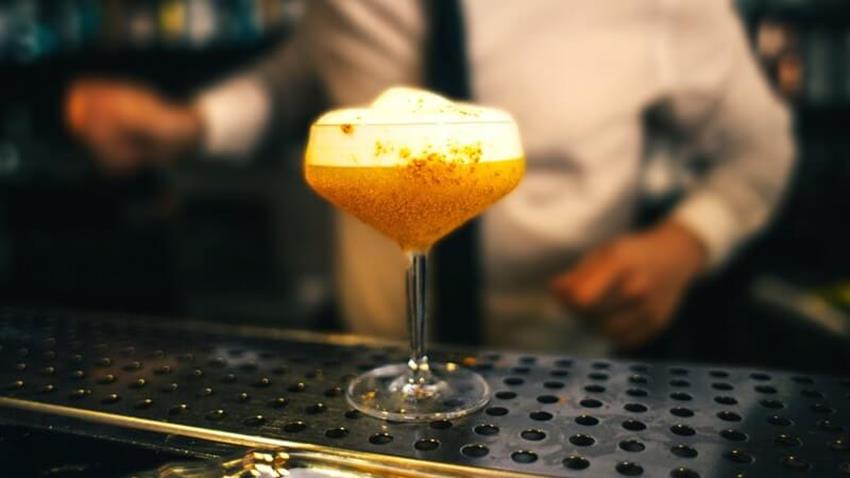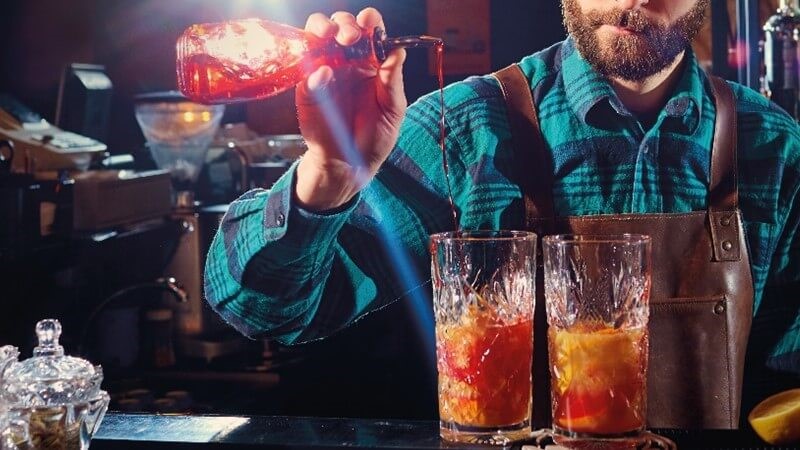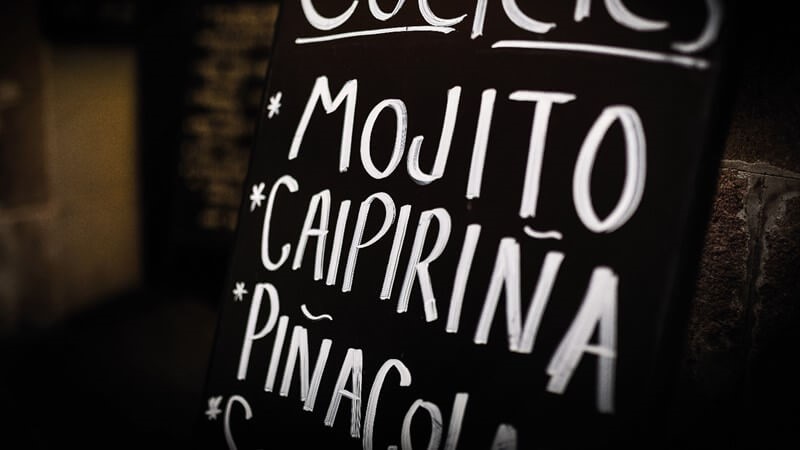
So you know your way around a bar, you can shake it with the best of them. Maybe you’re thinking of creating a cocktail creation of your own, but where do you start? Creating a cocktail is easy, creating a great tasting cocktail people will enjoy drinking time after time is a harder task.
Global Courvoisier Brand Ambassador, Rebecca Asseline says the first step is to find some inspiration, “You need to be passionate about creating one. This will initiate curiosity and will drive you to research a little on what you are willing to make”. “Learn some key classics and how they are made, you will find that a lot of ideas stem from other creations” adds our own Spirit Specialist Jon Glover.
Once you’ve got the initial piece of inspiration the next steps are to think about the concept of the drink and its core ingredient. “You need a theme or a concept to begin with, it could be something along the lines of an after-dinner cocktail, a seasonal serve, a brand-led drink or combinations of a couple of these” says Spirit Specialist Ian Daws, “Try to work with one specific ingredient to start with, think about the flavour profile and what it pairs or contrast with. It’s not a bad idea to look at the food world and classic pairings that fit in with the taste and aroma that your base product aligns with”. Miguel Smith, Global Brand Ambassador for Mount Gay Rums agrees, “the backbone of cocktail development begins with the highest quality spirit you can find”.

Next up, it’s time for some experimentation, creating cocktails is meant to be a fun activity after all! “Do what you love, love what you do” says Rebecca. “Play around with sweet and sour as well as sweet and bitter there are loads of combinations available” notes Ian, “once you have the second ingredient then look for something to either enhance or lengthen the experience”.
There is certainly a need to put the customer at the heart of what you’re trying to create. “The audience, trends, gross profit and affordability” should be at the front of your mind insists Rebecca. “Think about the flavour that you want to achieve, making sure the balance between sweet and sour is there”, says Jon. He isn’t wrong, the most important element of a cocktail is the balance of flavours. When a drink is balanced, each of the elements will cancel its opposite out creating an enjoyable drink that customers will enjoy drinking time and again.
“Think about the flavour that you want to achieve, making sure the balance between sweet and sour is there”
By Jon Glover, Matthew Clark
If the tart overpowers the sweet or the strong overpowers the weak the drink will not be balanced and one of the four ‘building blocks’ will influence the flavour too much. The Daiquiri is a great example of how this system works - the rum gives you the strong, the dilution from the shaken ice gives you the weak, the fresh lime adds the tart and the sugar syrup adds the sweet.
You then need to consider the practicalities of your drink. “There is no point putting a drink together that costs £7-8 to make as you would have to charge £30 to sell it” insists Ian. “Think about how easy it is to create or get hold of specific ingredients, if some are seasonal then how do you reproduce this drink in off-season periods. Think about syrups, foams and tinctures, if it takes you days, weeks or even months to make an ingredient from scratch then you need to think about lead times when you need to make some more.”
So what sort of cocktail should you be creating? “Those cocktails with 3-4 ingredients have stood the test of time and are still prominent today; the margarita, the daiquiri, the old fashioned, the list goes on. Keeping it simple will allow the ingredients shine through which in turn, does the work for you”, adds Ian, which is echoed by Jon, “take Dick Bradsell, he used a base of simplicity and then created a clever twist”.

Adding your own signature to a classic cocktail is a big trend in the industry. People look for a unique experience when they choose to spend their hard-earned cash. Signature cocktails can be original creations or twists on the classics. They go beyond what is usually expected, adding an extra layer to the drinker's experience. “The key to a successful cocktail is the ability to create a drink that’s new, but tastes and looks familiar” suggests Miguel Smith.
So you’ve found some inspiration, experimented, found a balance of flavours and created a commercial cocktail with your own stamp on it, what’s next? “Glassware and garnish are as important as the drink itself”, says Jon, “it adds to the theatre and look of the drink; and ensure that it is made the same every time”. “Make it with as much attention to the detail as you wish someone would do for you” adds Rebecca.
For consistent cocktails getting the right measurements is vital - just like preparing the perfect meal. In many cocktail bars across the world, you will see bartenders free pouring, this is an art form and incredibly difficult to be 100% accurate. For this reason, using measures is the best way of ensuring that your creation will contain the exact measurements it needs for excellence. Using measures or a PANCH cocktail key isn’t just for spirits and liqueurs, using them for syrups and fresh juice is just as important, if not just for flavour balance.
"Make it with as much attention to the detail as you wish someone would do for you"
By Rebecca Asseline, Courvoisier
Finally, it’s time to give your cocktail a name. “It needs to be easy to pronounce, think about how many customers shy away from wine listings like Gewurtztraminer and Nero d’Avola, if they don’t know how to pronounce it, they don’t order them for the risk of getting it wrong”, says Ian. “Use the origin of your cocktail to bring other ideas” suggest Jon, “look into the history of the spirit you have used. There will always be a back story that should help inspire you to get a name”. "Base your name on the story you wish to tell when you serve it, which depending on the situation, is a very important point”, adds Rebecca.
But do you need to take naming a cocktail so seriously? “It can have a historical theme on the origin of the drink or spirit used, it can be funny or it can be a pun", Ian says, "Dale De Groff told me once that he chooses the names for some of his drinks by looking at the horse racing names in the New York papers”.
Inspired to serve cocktails in your outlet? Find To find out more about our spirits range, take a look here. We're here to support you with everything that you need to make your range a success, from free menu design and print and barware at exclusive Matthew Clark prices.

